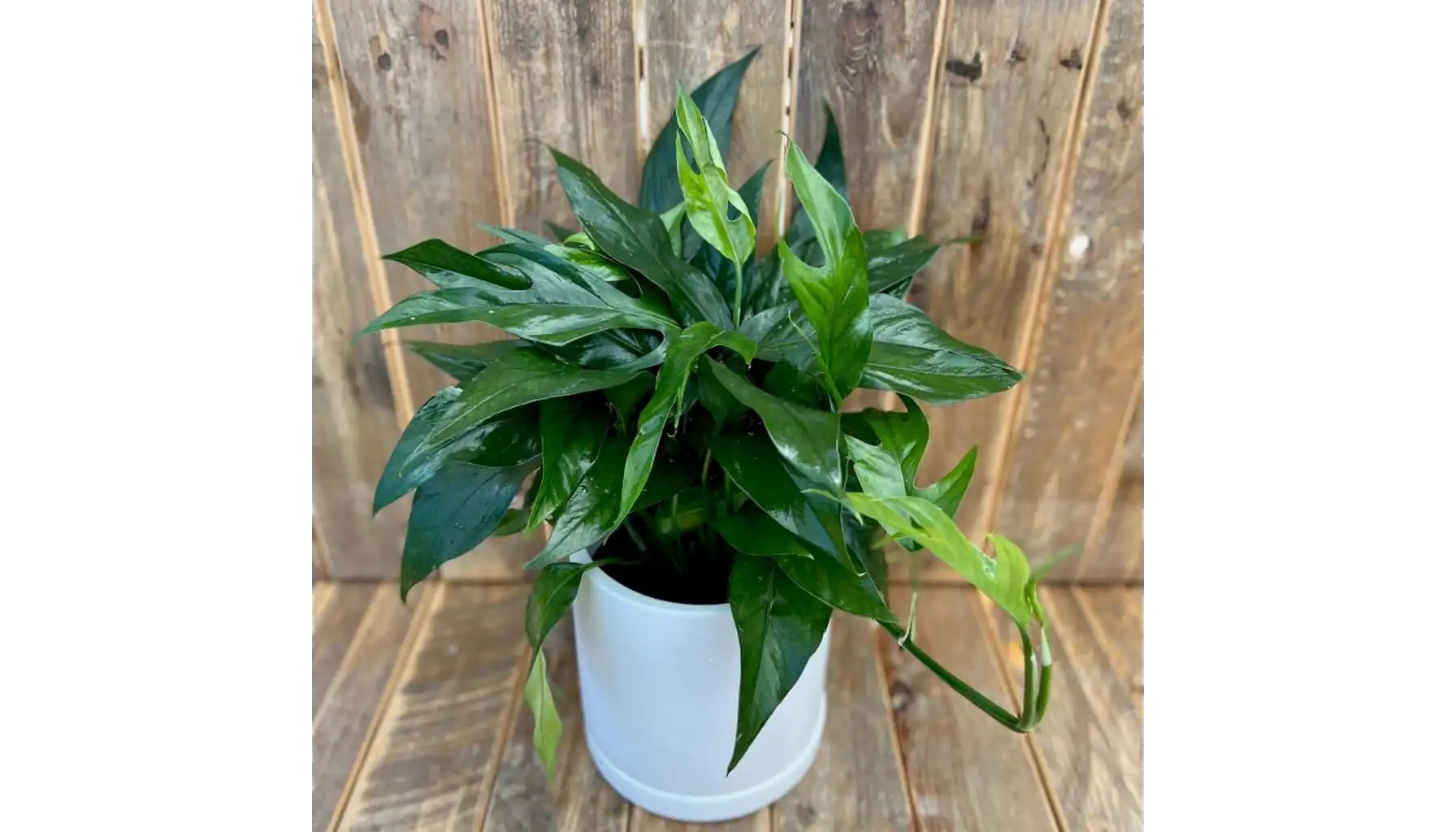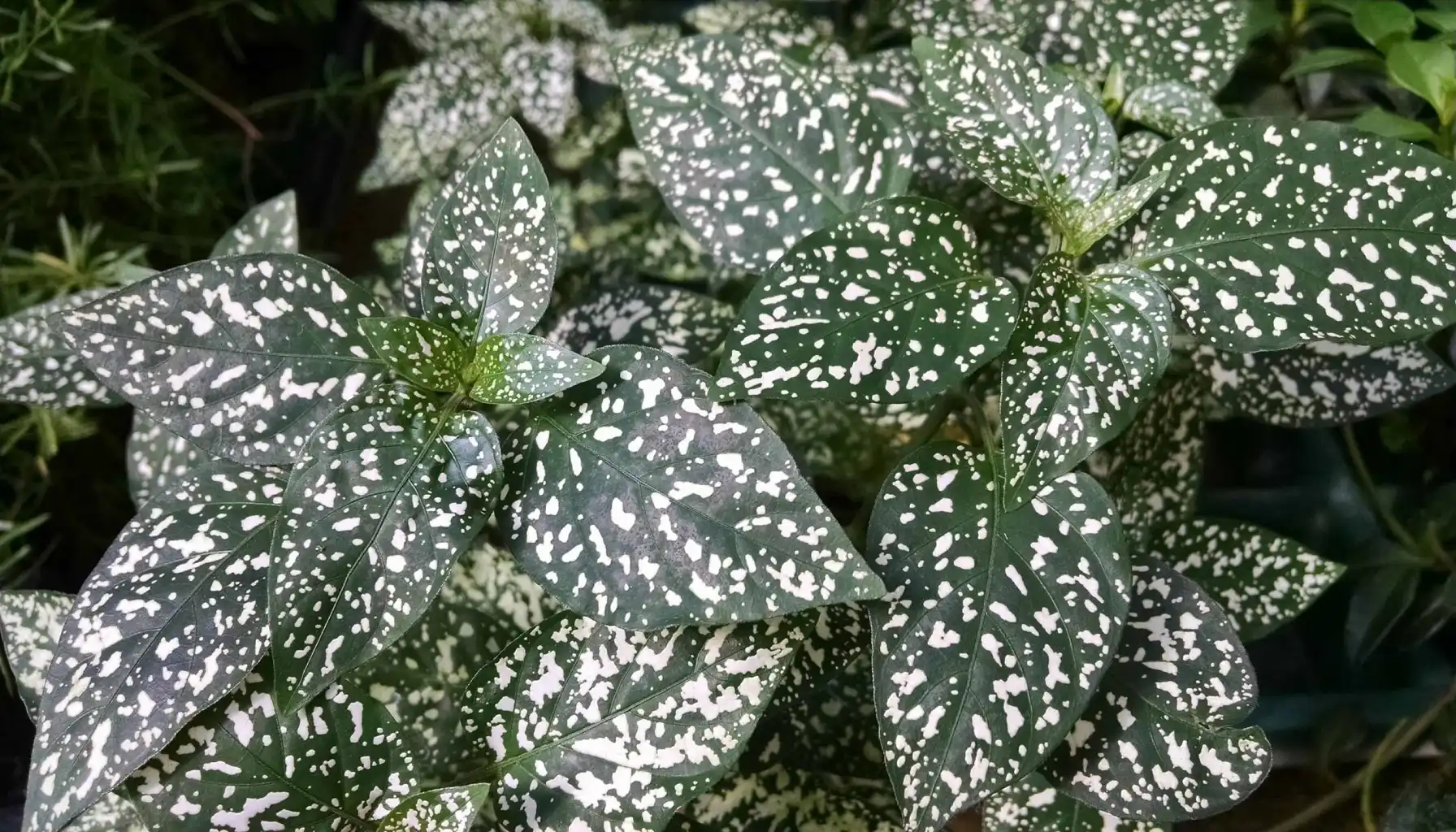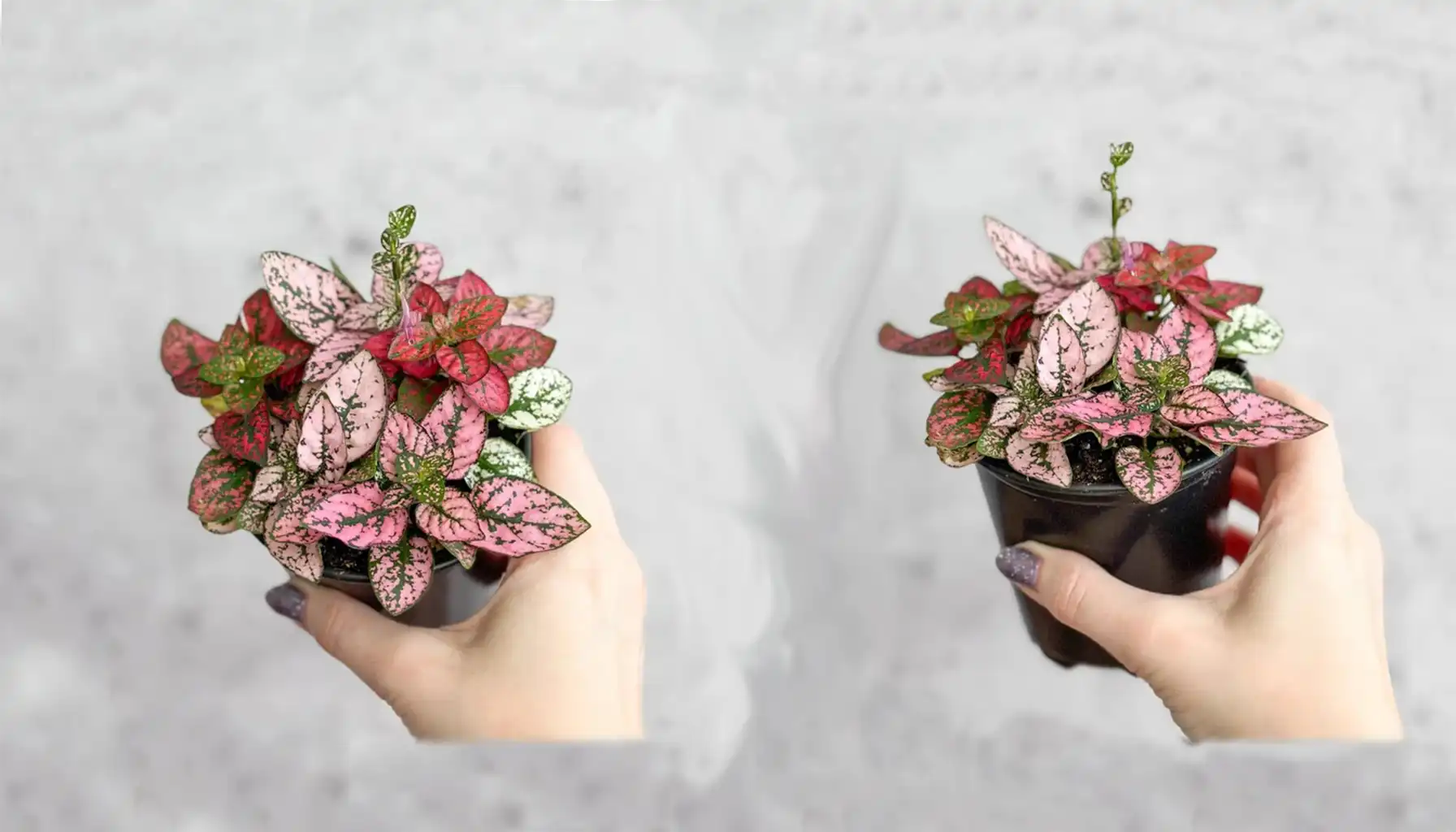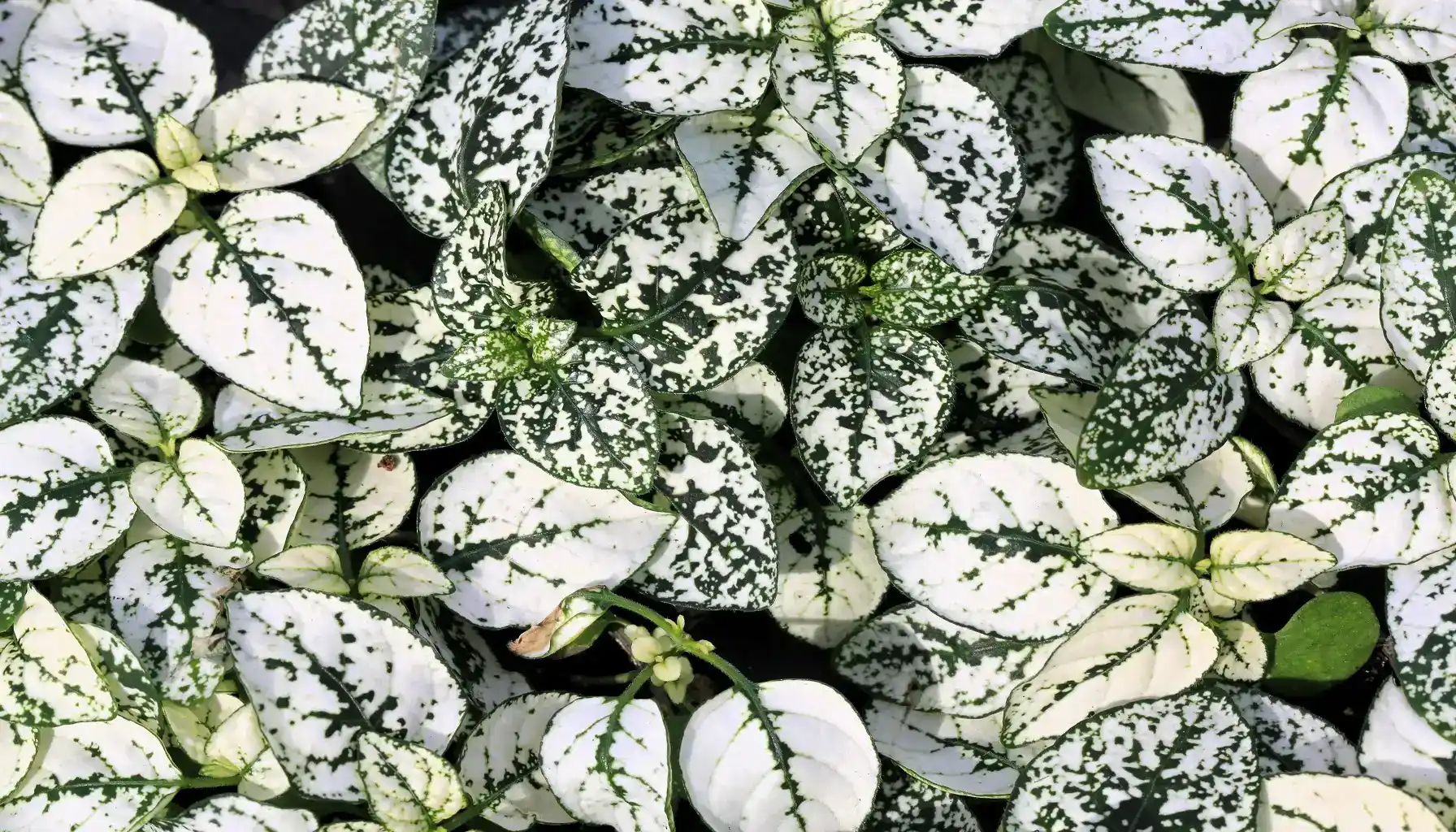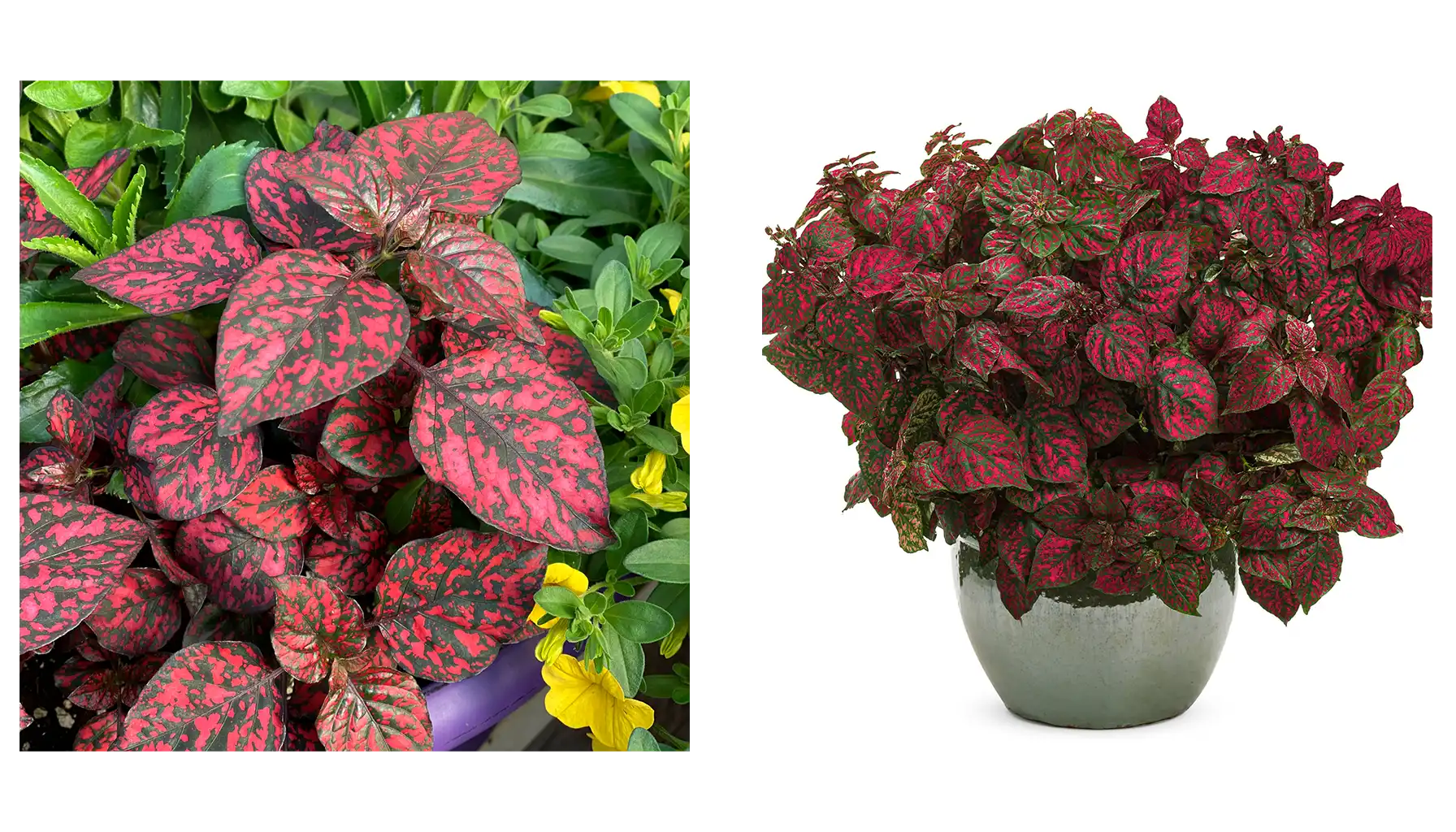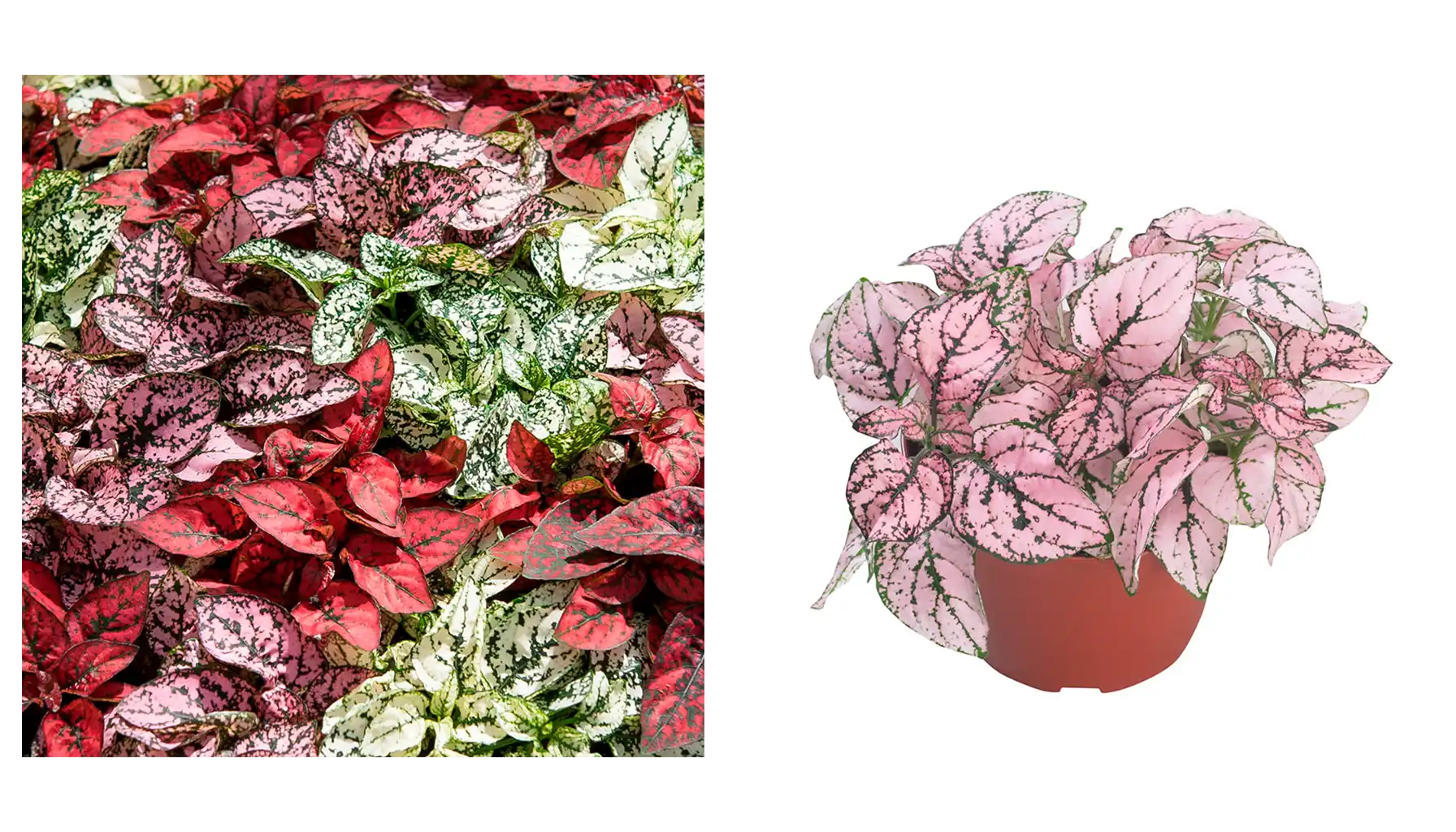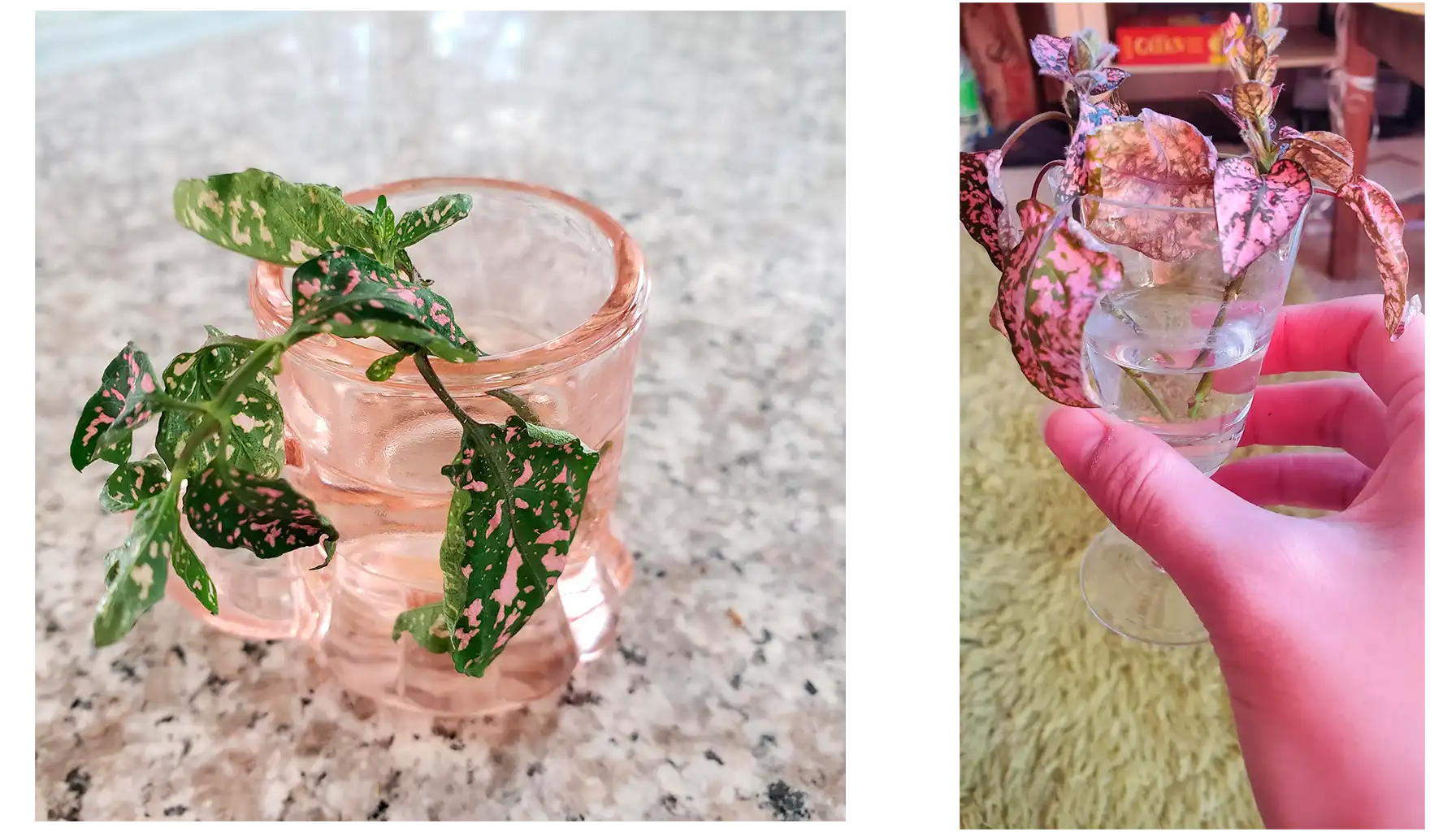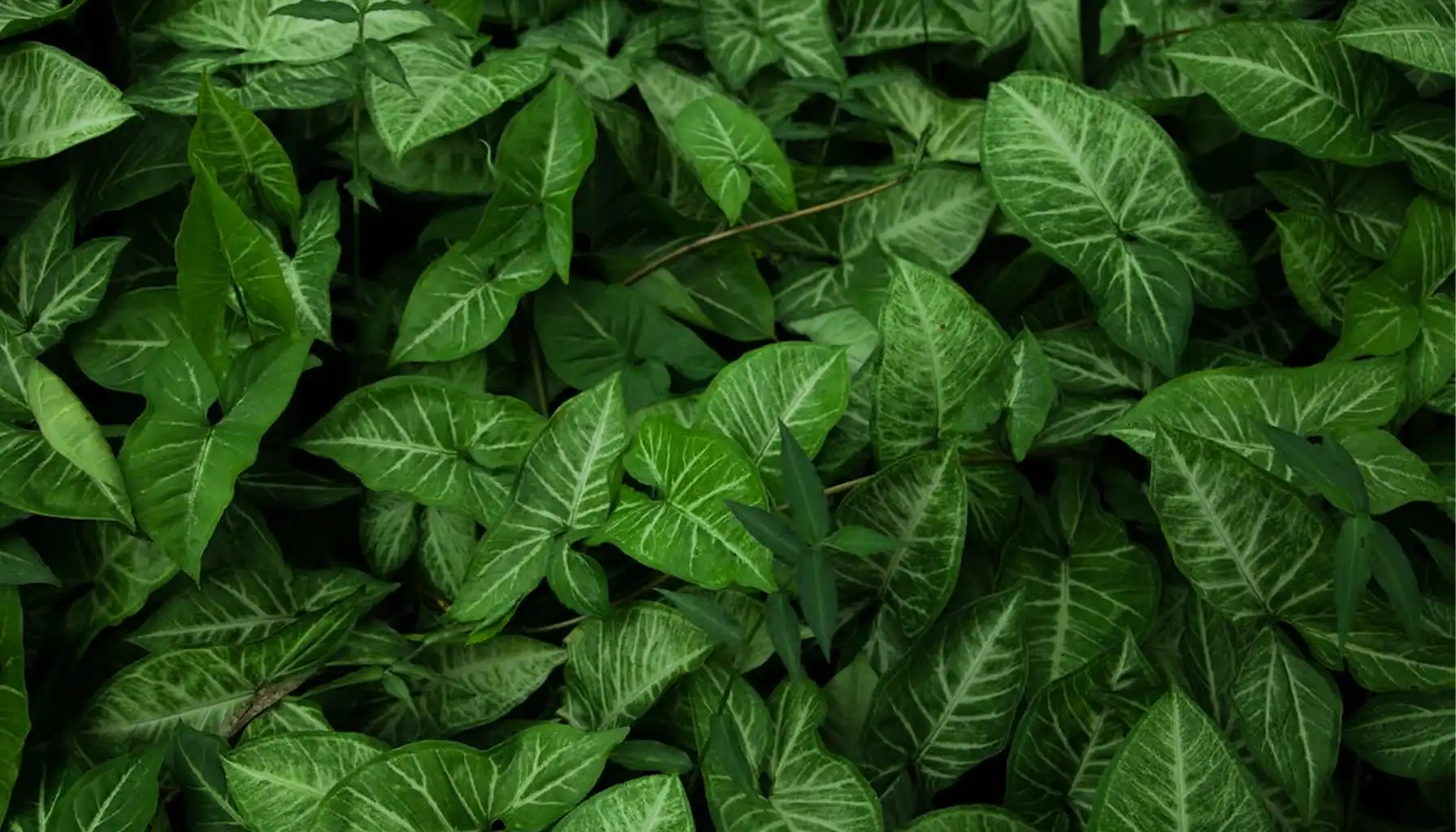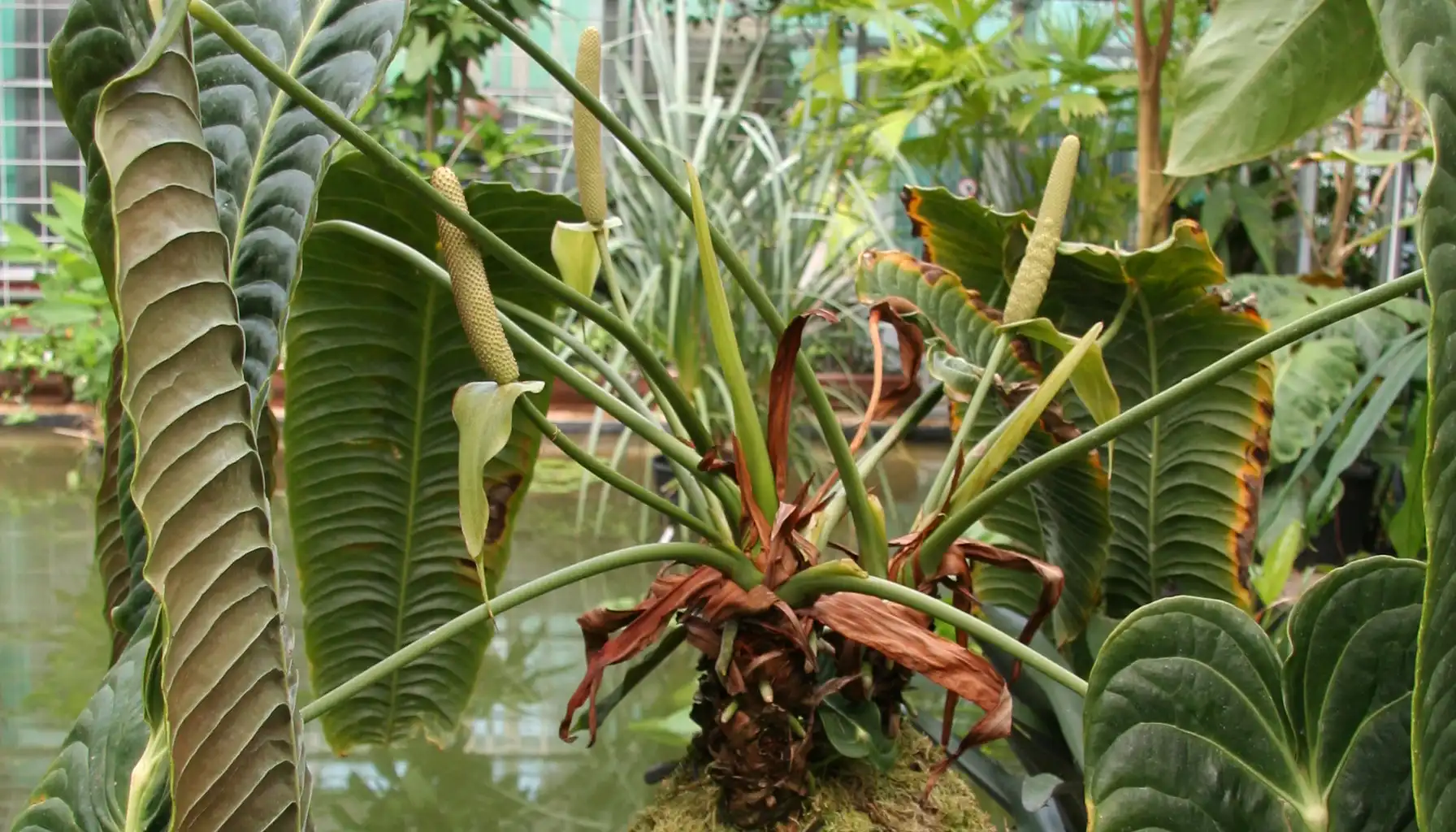Polka dot is a popular houseplant, but you still need to know a few tricks. Otherwise, you’ll never get that perfect dot pattern these guys are known for.
How to care for a Polka dot plant? Discover expert tips about propagation and some facts about this classic indoor flora.
The future is today! Now, a smartphone can become a plant identifier and recognize all kinds of flora for you.
About Polka Dot
The Polka Dot Plant gets its name because of its distinctive leaf pattern. The leaves are covered with spots or speckles that look like Polka dots.
It is also scientifically known as Hypoestes phyllostachya. Hypoestes polka dot plant is easy to notice due to bright white-coloured dots on its leaves.
Interestingly, this flora came from a far-away place. European botanists and plant explorers likely encountered Hypoestes phyllostachya in Madagascar in the 19th century, during colonial botanical expeditions. The same place where palm trees and other tropical flora grow,
Polca dots were later brought to North America to be studied and cultivated in greenhouses.
Polka Dot Overview |
Feature | Details |
Origin | Madagascar, Southeast Asia, South Africa |
Type | Tropical evergreen, often grown as a houseplant |
Size | 6–12 inches (15–30 cm) indoors, up to 24 inches (61 cm) outdoors |
Life span | Polka dot plant life span is 1–2 years |
Leaf Colors | Green with pink, red, white, or purple spots |
Flowers | Polka dot plant flowers are small, lilac or pale in color |
Propagation | Done by stem cuttings |
Toxicity | Non-toxic to pets (but mild stomach upset possible) |
Special Features | Bright foliage, compact growth, easy care |
Why People Grow This Flora
Is the Polka dot plant indoor or outdoor? Most commonly, people grow them indoors, but why exactly?
This flora gained popularity in the 20th century due to:
It's compact size, great for small spaces.
It's unusual and colorful foliage, especially appealing when flowering plants aren’t available.
Easy propagation and relatively low maintenance.
Polka Dot Colour Varieties
The original polka-dot plant had pink and white specks on its leaves. After the flora was discovered by the big civilization, breeders began developing more color variations and dwarf cultivars, making it even more attractive to indoor gardeners.
Color-wise wise Polka flora can be:
Pink Splash
White Splash
Red Splash
Confetti Blush
Let’s see how such plants look and if they are different from each other in more ways than color.
Pink Polka Dot Plant
This variety shows green leaves with pink speckles or blotches. Though in some cases, the plant breeders brought out so much pink that the leaves barely have any green to them.
Pink dots are the most common and classic look. Pink polka dot plant care takes a lot of light to maintain the vivid pink colour.
White Polka Dot Plant
This variety is known for green leaves with white dots or marbled patterns. These can look quite elegant and are great for adding contrast in plant displays.
It’s the second most popular variety, though it might get the first place soon with the rise of modern furniture style that attracts minimalism and white colors.
Red Polka Dot Plant
This variety displays very bold green or deep red leaves with bright red or crimson spots.
Some red types appear almost completely red with only a hint of green.
Confetti Blush
Confetti has bold spots in pink, red, or white. This diverse coloration is what got this variety the name “confetti”.
Compared to other types, confetti is smaller in stature and dot size. Confetti has some subvarieties like “white”, “red”, and “pink”, depending on the dominant colour in the mix.
Caring Guide
This flora became popular because it's easy to care for, close in difficulty to the top 10 easiest to grow indoor plants.
But for better results, it's better to know some of the plant’s wants and needs. Get ready for the caring guide.
Light
For this flora, the light requirements are balanced, common. This specimen needs bright, indirect light. In nature, it grows in the understories of forests and rainforests.
Too little light = dull or faded color, induces leggy growth.
Too much direct sun = leaf scorch or bleaching.
Watering
How often should you water your plants? The balance is the key. Polka flora can survive a bit of drought, but its roots are sensitive to rot.
Keep soil evenly moist, but not soggy. Water when the top inch of soil feels dry.
If you have a Polka dot plant hanging in your house, water it less frequently in winter, as water evaporates more slowly in colder seasons.
Soil
As said, this flora is weak to rot. Use well-draining potting mix, though a general mix should work well too if you water it carefully.
Here’s another good mix example: standard houseplant soil with some perlite or sand for better drainage.
Temperature
This flora prefers 65–80°F (18–27°C) temperatures.
For plant care indoors, make sure that the minimum temperatures are consistently 50°F (10°C) or higher.
Cold drafts and temperatures below 50°F (10°C) will impede the growth or may outright destroy the flora.
Fertilizing
The polka flora doesn’t need strong or special fertilizers.
Feed your houseplant every 2–4 weeks during the growing season (spring–summer). Use a balanced liquid houseplant fertilizer, diluted to half-strength.
Pests
This flora is weak to insects like:
Aphids: Small, soft-bodied insects. Aphids can cause damage to plants by sucking their sap.
Spider mites: Small colourful mites. Can spin silk webbing on infested plants
Whiteflies: Small, winged insects, not true flies. Often feed on sap in clusters.
When you have these pests indoors, make sure to use repellent/insecticides on them. General insecticides should do the job, usually.
If you grow this flora outdoors, try to place them near the plants that attract dragonflies. Dragonflies are natural repellents to many pests.
How to Propagate Polka Dot Plant
Propagation is the process of creating new plants from existing ones. Plants can multiply by growing themselves out of the cut part. Let’s see how to do Polka dot plant propagation:
Choose a stem
Pick a healthy stem with 2–3 leaf nodes (where leaves grow from the stem). Avoid flowering stems, as they root poorly.
It’s best to start propagating in the spring and summer months, when they are actively growing. A full-grown Polka dot plant is a good candidate, too.
Make the cut
Cut just below a leaf node (around 4–6 inches long). Remove lower leaves to expose the node. This is where roots will form.
Place in water
Put the cutting in a glass or jar with clean water. Make sure no leaves are submerged, only the stem. Place in bright, indirect light.
Wait for roots
Roots usually appear in 1–2 weeks. Change water every few days to prevent rot.
Plant in soil
Once roots are 1–2 inches long, plant the cutting in potting soil. Water lightly and keep in bright light.
Congratulations! Soon, you’ll have a new green friend in your house roster.
Polka Dot Safety
Is polka dot plant toxic to cats? No, this flora is not considered toxic to humans or most pets, according to the ASPCA.
But, very importantly, it’s not completely safe for animals to ingest. It may upset their stomach, especially with smaller animals like cats. Dogs are safe.
The final verdict: you can touch and stay close to this flora. Most animals would not try eating Polca dot, but if they do, they’ll get a mild tummy ache.
Home Benefits
While Hypoestes has no direct healing properties, it can still improve your house and your life.
Benefit | Description |
Decorative Appeal | Its vibrant, spotted leaves add color and pattern to indoor plant collections. When the flower blooms, it’s even more beautiful. |
Mood Booster | Bright, lively colors can help elevate mood and reduce stress. |
Humidity Enhancer | Releases moisture into the air, improving humidity in dry indoor spaces. |
Air Purifying (Mildly) | Like many house flora, it may help with air quality, though not as strongly as plants like snake plants. |
Terrarium Friendly | Thrives in high humidity and low space, making it ideal for closed terrariums. |
As you see, Polca dot is more than just a pretty bush. It’s a plant that purifies the air and makes your life just a little better.
AI Plant Finder
Now you know how to care for this green buddy, but there’s so much flora around us, and one app knows how to help with recognizing and taking care of it. AI Plant Finder app.
Snap or upload a photo to identify plants—including flowers, succulents, trees, grasses, weeds. The app recognizes around 300,000+ species with ~97% accuracy
The built-in AI can help you with questions and give care advice about fertilizing, pests, soil, and many other things we, gardeners, forget.
AI Plant Finder Offers both iOS and Android versions, available for free.
AI Plant Finder Related Posts:
